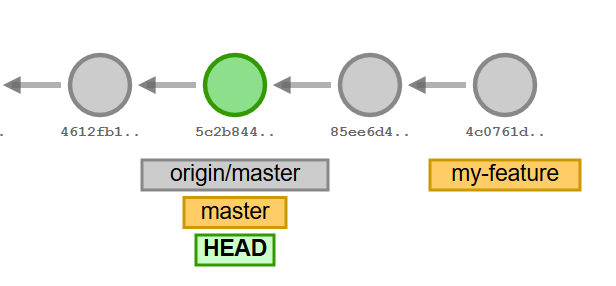

Reset to the latest commit on remote / upstream Remove all unstaged changes in my working tree.
Git reset origin how to#
If you want to preserve anything for later, you can use stash: How to stash and restore an edit with gitĬonsider whether you can use a simple method to remove untracked files instead of reseting the branch. git prune is generally not executed directly. Any commit that cannot be accessed through a branch or tag is considered unreachable. Unreachable objects are those that are inaccessible by any refs. Make sure you know what changes you're about to lose. The git prune command is an internal housekeeping utility that cleans up unreachable or 'orphaned' Git objects.
Git reset origin pro#
We'll begin with the following assumptions: you have a user branch that is tracking a remote/upstream, you have local edits that you want to discard and you want to reset local to the latest remote/upstream commit. One of the best definitions of HEAD comes from the Pro Git book: Usually the HEAD file is a symbolic reference to the branch you’re currently on. If you want to have prune executed with every fetch operation, you can configure Git accordingly: $ git config -global fetch.Here's a quick walkthrough to help you reset a local git branch to remote. Git reset origin to commit 11 April 2018 How do you reset a Git repository to a certain commit This example will delete the commits made after the commit you want to reset to, and then we’ll push it to origin. By the way: you never have to worry about your local branches, since prune will never affect those. Git keeps track of the changes made to a project over time. It is the most popular version control system in use today.

Git reset origin free#
The result is the same in both cases: stale references to remote branches that don't exist anymore on the specified remote repository will be deleted. J/ Git Git Reset Origin How to Reset a Local Branch to Remote Tracking Branch Dionysia Lemonaki Git is a free and open-source version control system. In cases where you'd like to only perform a prune and not fetch remote data, you can use it with the git remote command: $ git remote prune origin

Method 3 (delete and rebuild your local branch) Another way of using Git to reset the local branch to remote is to delete the remote copy of your branch entirely and then fetch the remote origin. The easiest way to use prune is to provide it as an option when fetching: $ git fetch -prune origin There is also the option to reset to a specific branch using: git reset hard origin/your-branch. (Don't confuse this with the stand-alone git prune command - this is used during garbage collection and is not what we're talking about here.) Git Reset Find Commit in Log The first seven characters of the commit hash - this is what we need to refer to in our reset command. If you are happy to throw away your new commits. To do that, we need to go through the log. abort the rebase which will restore your branch to how it was before you began the rebase, git rebase -abort. Undo last commit putting everything back into the staging area: git reset -soft HEAD Add files and change message with: git commit -amend -m New Message. Git Reset Find Commit in Log First thing, we need to find the point we want to return to. "prune" is available as an option for the git fetch and git remote commands. or git reset current2 (using a relative value -2 before the 'current' tag) Figure 2 shows the results of this operation. Step 1: Find the previous commit: Step 2: Move the repository back to that step: After the previous chapter, we have a part in our commit history we could go back to.


 0 kommentar(er)
0 kommentar(er)
